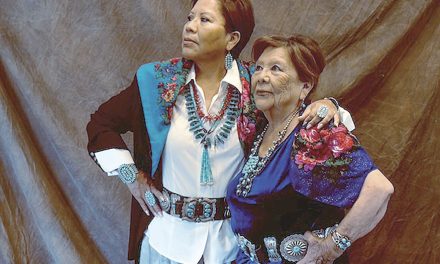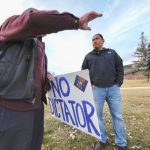
Northeastern Arizona has a violent death problem—what can we do about it?
Northeastern Arizona has a violent death problem—what can we do about it?
By Jordan Batchelor, Ph.D., Charles Katz, Ph.D., and Taylor Cox, Ph.D.
Violent deaths, like homicide and suicide, impose social costs on communities and families and adversely impact the quality of life for residents. And each one of them is preventable.
We work for the Center for Violence Prevention and Community Safety at Arizona State University and are responsible for administering the Arizona Violent Death Reporting System (AZ-VDRS). Since 2015, we’ve collected data from death certificates, medical examiner reports, and police reports to monitor trends in violent deaths throughout Arizona.
The Navajo Times serves a large geographic region and diverse readership across several states. In this article, we’d like to share information about homicide and suicide as it relates to a portion of this overall area, namely the Arizona counties of Apache, Coconino, and Navajo. Below, we discuss the pressing issue of high suicide rates among military veterans. Then, we talk about the high rate of homicide in northeastern Arizona. Finally, we share some recommendations and resources that could help make our communities safer.
Suicide among veterans in northeastern Arizona
Military veterans in northeastern Arizona die by suicide at higher rates than the general population. Between 2015 and 2023, more than 100 veterans died by suicide in Apache, Coconino, and Navajo counties. For every 10,000 veterans, about eight veterans died by suicide in Coconino County, seven veterans died by suicide in Apache County, and five veterans died by suicide in Navajo County. This contrasts with the overall rate of two-and-a-half suicides per 10,000 people across Arizona. In short, veterans are at greater risk of suicide, and the rates of veteran suicide in northeastern Arizona are higher than that of the state.
What factors contribute to this situation? The most notable factor is physical health problems, particularly chronic pain. Relative to non-veterans, veteran suicide decedents are much more likely to have chronic pain play a role in their suicide. This is especially true for veterans 55 years of age and older, while veterans 54 and younger display other factors, including intimate partner problems and non-criminal legal problems. Also noteworthy, suicide among veterans aged 18 to 34 is much higher than non-veterans of this age group, meaning younger veterans are a sub-population particularly in need of suicide prevention efforts.
Homicide in northeastern Arizona
Homicide is the second most prevalent type of violent death in Arizona. Looking across our 15 counties, Apache and Navajo counties show the highest rates of homicide, while Coconino County is in the middle. For example, between 2015 and 2023, Apache County showed 1.1 homicides per 10,000 people, compared to 0.6 for Coconino County and 0.7 for Maricopa County.
Across the United States, homicide disproportionately affects younger people, and the same is true for northeastern Arizona, as over half of homicide victims were between the ages of 25 and 44. At the same time, these counties showed fewer homicides among people aged 15 to 24 relative to the rest of the state, meaning homicide victims in northeastern Arizona tended to be older than expected.
Looking forward
We strongly feel that all violent deaths are preventable. To reach this goal, we would like to share several recommendations for making northeastern Arizona’s communities safer.
Getting more complete information about violent deaths in northeastern Arizona
We do not currently have all the crucial information we need to learn about violent deaths in northeastern Arizona. For example, the AZ-VDRS does not currently receive data from the Navajo Nation Police Department. While gaining its participation would be a complex process, doing so would enable the AZ-VDRS to safely house rich contextual data on violent deaths that could then help direct resources to those who need it most in the Navajo Nation.
Raising awareness through data sharing
The most effective use of the AZ-VDRS is in sharing information to inform the public. One way of doing this is through articles like this one. Another way is through our new public-facing data dashboard, allowing users to customize searches to learn more about issues affecting Arizonans. We encourage everyone to visit the dashboard at azvdrs.org/dashboard.
Promoting firearm safety to prevent violent deaths
Firearms are a particularly lethal means of suicide and homicide. Veterans use firearms to complete suicide at a higher rate than the general population, and firearm deaths account for the bulk of Arizona’s homicides. Promoting safe, secure firearm storage can help reduce violent deaths by increasing the time between a suicidal urge and getting hold of an unsecured firearm. Similarly, it can reduce the risk of children and adolescents accessing someone else’s firearm and harming themselves or others. The U.S. Department of Veteran Affairs and the Arizona Public Health Association offer informative resources about firearm safety and much more.
Click to access Lethal-Means-Brochure-508.pdf
Firearm Violence in Arizona: An Avoidable Public Health Crisis








 Highway 264,
Highway 264, I-40, WB @ Winslow
I-40, WB @ Winslow